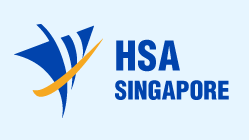The article provides an overview of the regulatory requirements related to the content of special communications to be issued by medical device manufacturers in order to inform about the issues associated with the products they are responsible for.

Table of Contents
The Health Sciences Authority (HSA), Singapore’s regulatory agency in the sphere of healthcare products, has published a guidance document dedicated to the components elements of a “Dear Healthcare Professional” letter. The document provides additional clarifications regarding the applicable regulatory requirements, as well as recommendations to be considered by medical device manufacturers and other parties involved in order to ensure compliance thereto. At the same time, provisions of the guidance are non-binding in their legal nature, nor are intended to introduce new rules or impose new obligations. Furthermore, the authority also reserves the right to make changes to the guidance, should such changes be reasonably necessary to reflect corresponding changes to the underlying regulations.
Regulatory Background
As explained by the HSA, in certain cases, a party responsible for a medical device allowed for marketing and use in the country (e.g., a medical device manufacturer or importer) will face a need to communicate important information related to the device to healthcare practitioners using it. In such a case, a “Dear Healthcare Practitioner” letter could be issued, which is a part of a post-market surveillance system. According to the guidance, the risks associated with deficiencies in “Dear Healthcare Professional” letters, which include delays in dissemination, inaccurate information, vague information, and omitted (intentional or otherwise) material information, can range from little or no risk to patients and users to significant potential risks inherent in continued incorrect medical device use.
Recommendations provided in the document should be taken into consideration by any and all the parties involved in operations with medical devices allowed for marketing and use in the country, including registration holders, manufacturers, importers, suppliers, and wholesalers.
Terms and Definitions
First of all, the document provides definitions of the most important terms and concepts used in the context of the matter, in addition to the ones initially set forth in the applicable legislation being the Health Products Act (Act) or Health Products (Medical Devices) Regulations 2010 (Regulations). The terms described in the guidance include, inter alia, the following:
- “Dear Healthcare Professional” letter – a letter drafted by dealers of medical devices addressed to doctors, pharmacists, and healthcare professionals regarding important new medical device issues, .e.g., new warnings, other safety information, or other important changes to the prescribing information (labeling); in essence, it is commonly issued to communicate risk to medical device users, typically in response to an adverse event or to provide additional information to enable safer and/or effective use of medical device.

Content of the Letter
The document further describes in detail the elements to be included in a “Dear Healthcare Professional” letter. According to the guidance, such a letter should provide the following information and details:
- Information about the party responsible for a medical device – the product owner.
- Name and contact details of the dealer. The latter stands for any natural or legal person established in Singapore who, explicitly designed by the product owner, acts on behalf of the product owner to fulfill regulatory obligations. Under the applicable regulatory requirements, a foreign medical device manufacturer is obliged to appoint a local representative to act on its behalf. Thus, a letter should contain the contact details of both the product owner and dealer.
- Proprietary name of the medical device in question.
- Details about the intended use of an affected medical device and indications associated thereto. In this section, a responsible party should also provide all the details regarding the device in question necessary to identify the affected products.
- Indication of the subject matter of the letter.
- Description of the issue identified and risks associated thereto. The authority requires a party responsible for a medical device to provide comprehensive information about the problem associated with a medical device, resulting in a letter being issued. According to the document, this section could contain the details about:
- An adverse event associated with a medical device,
- Significance of the consequences thereof,
- Justification for the relationship between the event and the corresponding device’s failure to perform as intended,
- Whether the incident took place due to the use of a medical device in a way, different from the one prescribed by the manufacturer (unapproved indication or conditions for use),
- Specifics of an adverse event already known to the manufacturer (e.g., affected population),
- Sources of the information available,
- Probabilities associated with the occurrence of adverse events in question.
- Actions to be taken. The letter should also provide recommendations to be taken by the parties involved in the use of an affected medical device in order to mitigate the risks associated with the malfunction identified. In this section of the letter, a product owner may:
- Highlight contraindications relevant to the adverse event(s);
- Reinforce warnings relevant to the adverse event(s);
- Provide an extended list of possible known adverse reactions to be expected or likely to occur;
- Provide information for the consumer;
- Indicate what is thought to be an acceptable level of risk for the issue described in the communication.
The letter described herein should be signed by an authorized person of the product owner.
In summary, the present HSA guidance provides an overview of the requirements, as well as additional clarifications regarding the content of “Dear Healthcare Professional” letters, the parties responsible for medical devices, may use to communicate important, usually safety-related information to the ones involved in the use of such devices. The document outlines the scope of information to be included in a letter to ensure the most important aspects are duly addressed.
Sources:
How Can RegDesk Help?
RegDesk is a holistic Regulatory Information Management System that provides medical device and pharma companies with regulatory intelligence for over 120 markets worldwide. It can help you prepare and publish global applications, manage standards, run change assessments, and obtain real-time alerts on regulatory changes through a centralized platform. Our clients also have access to our network of over 4000 compliance experts worldwide to obtain verification on critical questions. Global expansion has never been this simple.

